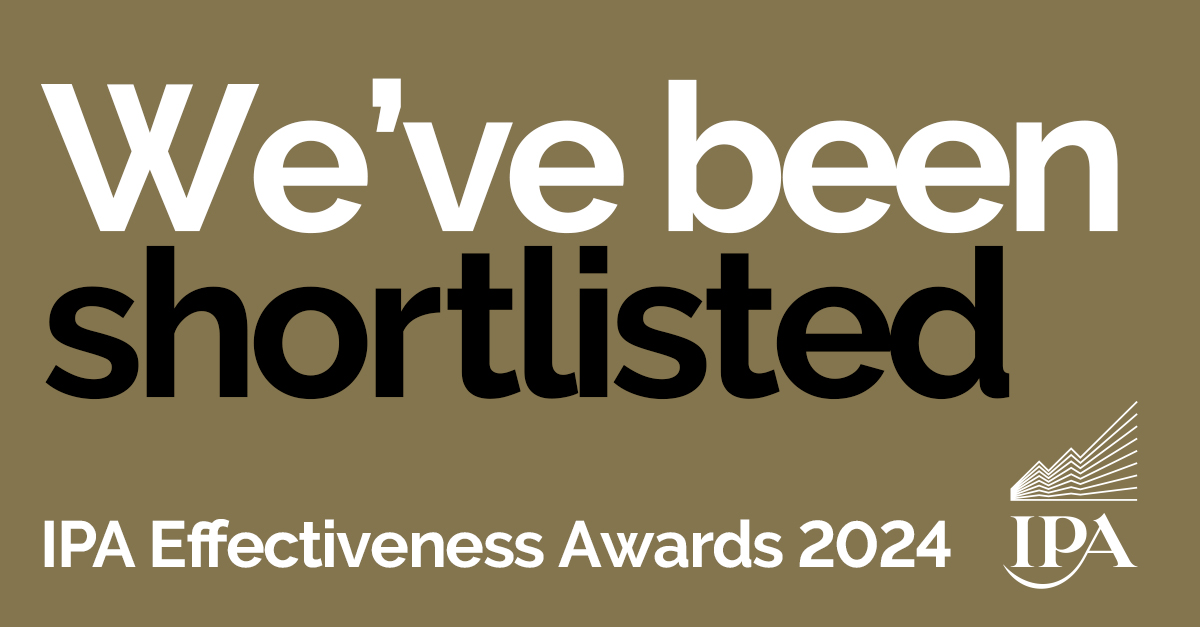Last week’s publication of ISBA’s new report into Programmatic supply chain transparency has set off a noisy but necessary bomb in programmatic media planning and buying circles.
It reveals that there is still something worrying at work in the heart of the £2 billion UK programmatic industry. Industry body ISBA enjoined auditors PwC to look into current media buying procedures in a lengthy and sometimes difficult attempt to hunt down the payment and data ownership trail. They uncovered a complex, often conflicting story.
But the bottom line is simple:
There’s a big black hole where the industry’s accountability should be.
Only 12% of brands’ programmatic ad impressions can be reliably accounted for. Just half of advertising spend reaches ad publishers. Only 15% of total industry spend has gone on advertisements that can be confirmed to have been seen by an actual living, breathing person.
You don’t have to be an expert to see that isn’t great.
Or to understand that there is huge space within that 85% of remaining spend for massive malfeasance to thrive. Someone somewhere – let’s be honest – is taking the mickey.
Programmatic media is everybody’s business
And that’s where it becomes everyone’s business. Because if deliberately unethical or dishonest practices are flourishing in that billion pound-plus black hole, the risk of reputational damage poses a serious threat to all of us and the agency model itself.
Some experts haven’t necessarily rushed to accept the report’s findings. There are concerns that they are perhaps framed too negatively, or that PwC are too removed from the industry to understand the particulars (or maybe hoping to create problems to offer solutions to). After all, we are all only too aware of how complex and rapidly-evolving media buying is. That dynamism, that flexibility – is one of its (many) virtues.
You love to see it. This diversity of opinions and perspectives is a straightforward good, and testament to the underlying health of the industry. People don’t get into the media buying industries because they like a cosy consensus. Echo chambers are the death of innovation and creativity.
The wrongs of being right
But I don’t feel like I’m giving in to confirmation bias when I say I am inclined to accept the report’s findings from top to bottom. It validates a belief that Mark and I had when we set up Anything is Possible – that something was rotten in the heart of advertising.
It gives us no pleasure to be proved right by the report – but we knew it was coming.
We knew from stories swapped in industry watering-holes that unscrupulous agencies rely on the opacity of the media buying process to inflate margins and dodge the big question of client accountability.
It’s too easy to hide in all the dark spaces this report throws a light on. Agencies become bloated, self-serving, and profit from activity that doesn’t provide real value for clients. The resultant cultures of uniformity and conformity make changing course once these practices are established next to impossible.
But impossible isn’t something we believe in.
So we started afresh. We got sick of that nagging suspicion that programmatic media planning was making the world worse, and decided to do something about it.
Fighting the poor practices highlighted by this report are exactly why Anything is Possible exists.
It could be tempting to pick the study apart, find fault in the numbers and diagrams, dispute the methodology, accept that some parts of the value chain are always going to be fuzzy, if not outright opaque. Easy to shrug it all off as business as usual, as if those working in the space were somehow separate from what we do every day, and not in fact creating it with our actions.
So it’s important to reflect on what the dark spaces in those numbers actually mean.
For real people, who spend their (our) lives immersed in digital environments, these deliberately obscure practices have real effects on the world we live in.
Conscious advertising
Let’s turn to the CAN manifestos and see what these taken-for-granted programmatic media practices, that billion-plus of missing revenue, could be affecting out there in the real world:
- Ad fraud.
- Anti-diversity.
- Non-consensual data sharing.
- Hate speech.
- Children’s wellbeing.
- Fake news.
These all have tangible effects on the world we live in, eroding social integrity and the stability of the institutions we trust to do right by us.
Especially at times like this, it’s not OK to look the other way when we know this is going on.
We don’t work like this. And we are here to prove that working better adds extra value to our clients and the world around us.
This is why we only succeed when our clients do – we tie our fee to project performance to ensure we have real skin in the game when it comes to client success. And we always pass on agency rate discounts from suppliers to our clients, to avoid the possibility of dodgy backroom deals.
Ultimately these policies are a question of attitude and intent, of keeping our integrity when the path of least resistance may tempt us elsewhere. But there are practical tools that we use to avoid the pitfalls in ISBA’s report too.
At the outset of building our business, we knew supply chain transparency had to be one of the building blocks of lasting, practical change. That was why we were such early adopters of Fenestra’s blockchain technology to track every transaction detail in our clients’ campaigns. It means we can guarantee and offer full visibility, down to every penny and impression of their media spend.
It’s tough to have our brand and our mission validated like this. But we welcome the report, the conversation and reforms it will go on to inspire and the evidence it gives us to back up our instincts.
Transparency and transformation for the industry can’t come overnight, but if you want to talk about a different way of approaching programmatic media planning and buying, I’d love to show you how we do it.





